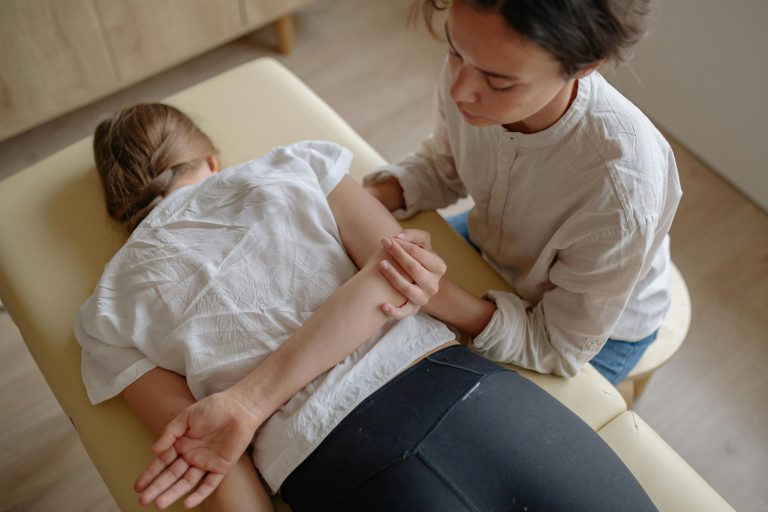• TMJ disorder is a condition that affects the temporomandibular joint, which can cause pain in the jaw, face, and neck as well as clicking or popping sounds.
• Potential risk factors include arthritis, teeth grinding/bruxism, missing teeth, and trauma.
• Treatment for TMJ disorder treatment may include medication, physical therapy, and surgery in extreme cases.
• It’s essential to seek medical attention if you think you have TMJ so that the condition can be appropriately diagnosed and treated.
TMJ disorder is a condition that affects the temporomandibular joint, which is the hinge that connects the lower jaw to the skull. The disorder can cause pain in the jaw, face, and neck and clicking or popping sounds when moving the jaw.
In severe cases, TMJ disorder can even lead to joint dislocation. If you think you may be suffering from TMJ disorder, here are some things you need to know about it.
What Are the Symptoms of TMJ Disorder?
The most common symptom of TMJ disorder is pain in the jaw area. Other symptoms include headaches, earaches, dizziness, teeth grinding, difficulty chewing or swallowing, and more. If you are experiencing any of these symptoms, it’s essential to see a doctor so that they can rule out other potential causes and correctly diagnose your condition. It’s also good to visit a dentist to know if the problem concerns oral health.
Risk Factors
Anyone can get TMJ, but others are more susceptible to it than others. Here are the risk factors for the disorder.
Arthritis
One of the most common risk factors for TMJ is arthritis. Arthritis is a general term used to describe inflammation of the joints, and it can affect any joint in the body—including the temporomandibular joint.
There are many types of arthritis, but the two most common types associated with TMJ are osteoarthritis and rheumatoid arthritis. Osteoarthritis is caused by joint wear and tear, while rheumatoid arthritis is an autoimmune disorder that causes inflammation. If you have either of these forms of arthritis, you may be at an increased risk of developing TMJ.

Teeth Grinding (Bruxism)
Teeth grinding is another common risk factor for TMJ. Teeth grinding, also known as bruxism, is a habit many people have—often without even realizing it. Bruxism can be caused by stress or anxiety, often occurring at night during sleep. If you grind your teeth regularly, you may strain your temporomandibular joint unnecessarily, leading to pain and discomfort.
Missing Teeth
Chewing is a complex process that requires all teeth to be aligned. If you are missing one or more teeth, it can throw off the balance of your bite. This imbalance can lead to extra strain on your temporomandibular joint, leading to TMJ disorder. One way to deal with this is by visiting a teeth replacement service. This can help to restore your bite and relieve the strain on your jaw joint.
Trauma
Trauma can also increase your risk of getting TMJ disorder. This can include physical trauma, such as a blow to the face or jaw, or emotional trauma, such as stress or anxiety. Both types of trauma can cause tension in the muscles around the jaw joint, leading to TMJ disorder.
Treatment
The treatment for TMJ disorder will depend on the severity of your condition. Here are various treatments for TMJ.

Medication
Over-the-counter pain medications such as ibuprofen or acetaminophen can reduce inflammation and relieve pain in the jaw area. If over-the-counter medications are ineffective, your doctor may prescribe stronger medications, such as muscle relaxers or anti-inflammatories, to help control the symptoms of TMJ.
Physical Therapy
Physical therapy focuses on strengthening the muscles around the temporomandibular joint to reduce strain on the joint itself. Your physical therapist may recommend stretching and massage to help relax tight muscles or strengthening exercises to build up weak muscles in the jaw area. You may also be advised to use heat or ice therapy on your jaw muscles before exercising.
Surgery
In extreme cases, surgery may be necessary to treat severe pain caused by TMJ. Surgery typically involves removing part or all of the temporomandibular joint, replacing it with an artificial one, or fusing parts, so it does not move as freely. The decision to have surgery should always be discussed with your doctor first to determine if this is an appropriate treatment for your situation.
TMJ is a condition that can be managed with proper diagnosis and treatment. It’s essential to seek medical attention if you think you may have TMJ. This will ensure the condition is correctly diagnosed and treated to relieve pain and discomfort.






